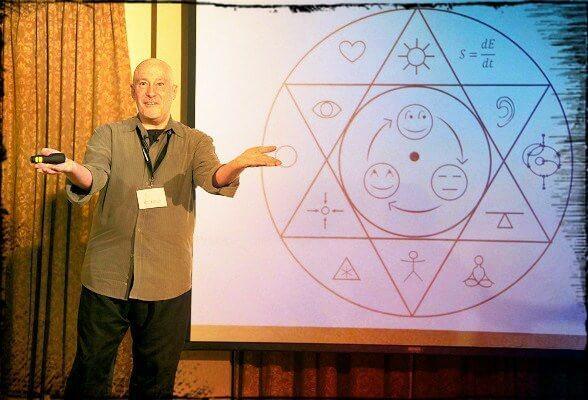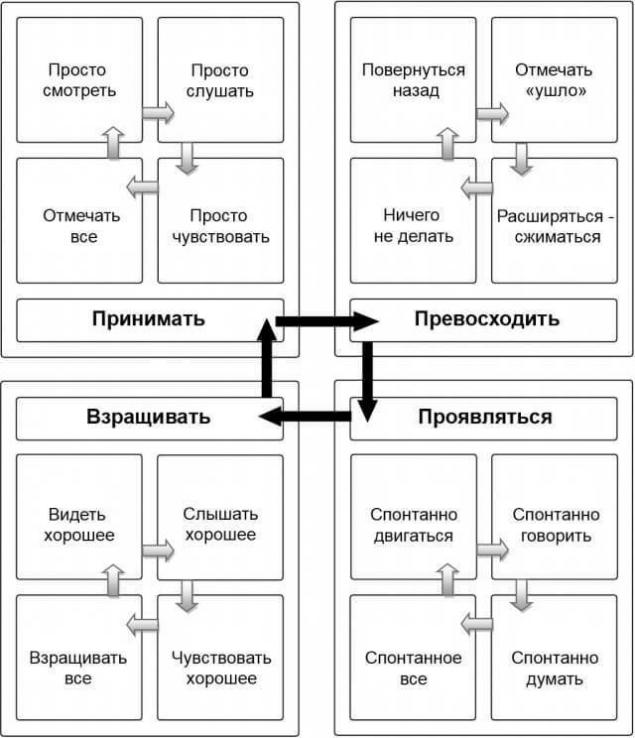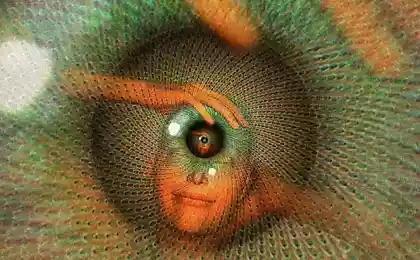801
Understand yourself: 4 main elements of mindfulness practice
Shinzo Young is constantly changing and improving their approach the base of awareness, in which tries to integrate all of the basic techniques of contemplative practices of East and West into one consistent system.
He often says he wants to do for contemplative techniques the same as Ken Wilber - for all areas of human knowledge. ULTRA (Universal Library for Training Attention), that is, "universal library practices mindfulness training" - this is the most recent version of its integrative system
.
For starters here are a few definitions as the context needed to understand the ULTRA.
Awareness:
It is a certain way to pay attention to what is happening around and within you. It includes three basic skills that work together:
the concentration of power: the ability to focus on what you consider important in a given time
. Touch Clarity: the ability to see and unravel the thread of your sensory experience
. Equanimity: a certain kind of balance within awareness. It is a balance between suppression of sensory experience on the one hand and complete identification with them on the other.
Sensory experience:
This is what you see, hear and feel. Feelings include the whole body experience, both emotional and physical. The perception of smells and tastes also are bodily experience.
"Marking»:
One of the ways of development of consciousness through a clear perception of the sensory experience and the subsequent concentration on soft with it suitable for you at the moment intensity.
Mental shortcut:
The option that you can use during the "mark the". These are the words that call a specific sensory experience, where you focus at the moment. Words can be spoken out loud or only sound in your head.
Techniques:
Exercises that use the concentration to focus attention on different objects and help you to develop the power of concentration, sensory clarity and equanimity. With ULTRA you can learn up to 16 different techniques, depending on your interests and needs. Six of them include "celebration" ( "just look", "just listen", "just feel", "celebrate what is happening", "celebrate" gone, "" and "expansion-contraction»).
The practice of mindfulness:
The structure of the practice, which you need to adhere to in order to develop awareness. It includes four main elements:
Daily formal practice,
Daily informal practices,
Periodic intensive retreats,
Periodically rethinking global picture (perhaps with the participation of the facilitator).
The advantages offered by the practice of mindfulness:
Reducing suffering,
Increased satisfaction,
Understanding yourself,
The ability to operate as efficiently as possible,
Serving others out of love.
What is the ULTRA
ULTRA - is the latest formulation of the system of psycho-spiritual growth contemplative developed Shinzenom Young. It brings together all the world's technology focus in the 4 main themes. Each theme includes 4 major appliances (though there are plenty of auxiliary equipment associated with each theme).
Topics
Techniques
Take yourself and the world
Sensing the touch experience in its entirety
• Just watch: monitor the flow of visual information
. • Just listen: to observe the flow of auditory information
. • Just feel, observe the sensations in the body
. • Celebrate everything that happens: watch all sensory experience
. Excel yourself and the world
Get in touch with something beyond the perception
• «to turn back" (to carry out self-examination): try to realize or to ask questions, "Who am I?", "Who sees?", "Who hears?", "Who feels?»
. • Celebrate "gone": mark the moments when certain sensory experiences or any portion thereof reduced in intensity or stopped altogether
. • Expand-contract: work with two basic flow forms
. • Do nothing: leave entirely any intention to focus on something
. Manifested spontaneously
To develop the energy and creativity that you do, say and think.
• spontaneously move: tune to spontaneity, when you go, running, dancing, etc.
.. • spontaneously say, tune in to spontaneity in expression through voice
. • spontaneously think: support global non-fixed state of mind
. • Spontaneous everything: to do all of these steps together spontaneously
. Cultivate positive
Selectively apply to positive emotions, rational thinking, positive action.
Pereosoznat themselves, clear the mind and live in service to others.
• To see the good: to create and maintain a positive mental images
. • Hearing good: to create and maintain positive thoughts (mental phrase)
. • Feel good: find / create and maintain a pleasant emotional and bodily sensations
. • Cultivate all: do all three things at once called
. This table techniques can also be represented as a single scheme:
Universal library of training care: a guide for self-practice

Author: Shizen Young, translation Tatiana Yamaltdinova
He often says he wants to do for contemplative techniques the same as Ken Wilber - for all areas of human knowledge. ULTRA (Universal Library for Training Attention), that is, "universal library practices mindfulness training" - this is the most recent version of its integrative system
.

For starters here are a few definitions as the context needed to understand the ULTRA.
Awareness:
It is a certain way to pay attention to what is happening around and within you. It includes three basic skills that work together:
the concentration of power: the ability to focus on what you consider important in a given time
. Touch Clarity: the ability to see and unravel the thread of your sensory experience
. Equanimity: a certain kind of balance within awareness. It is a balance between suppression of sensory experience on the one hand and complete identification with them on the other.
Sensory experience:
This is what you see, hear and feel. Feelings include the whole body experience, both emotional and physical. The perception of smells and tastes also are bodily experience.
"Marking»:
One of the ways of development of consciousness through a clear perception of the sensory experience and the subsequent concentration on soft with it suitable for you at the moment intensity.
Mental shortcut:
The option that you can use during the "mark the". These are the words that call a specific sensory experience, where you focus at the moment. Words can be spoken out loud or only sound in your head.
Techniques:
Exercises that use the concentration to focus attention on different objects and help you to develop the power of concentration, sensory clarity and equanimity. With ULTRA you can learn up to 16 different techniques, depending on your interests and needs. Six of them include "celebration" ( "just look", "just listen", "just feel", "celebrate what is happening", "celebrate" gone, "" and "expansion-contraction»).
The practice of mindfulness:
The structure of the practice, which you need to adhere to in order to develop awareness. It includes four main elements:
Daily formal practice,
Daily informal practices,
Periodic intensive retreats,
Periodically rethinking global picture (perhaps with the participation of the facilitator).
The advantages offered by the practice of mindfulness:
Reducing suffering,
Increased satisfaction,
Understanding yourself,
The ability to operate as efficiently as possible,
Serving others out of love.
What is the ULTRA
ULTRA - is the latest formulation of the system of psycho-spiritual growth contemplative developed Shinzenom Young. It brings together all the world's technology focus in the 4 main themes. Each theme includes 4 major appliances (though there are plenty of auxiliary equipment associated with each theme).
Topics
Techniques
Take yourself and the world
Sensing the touch experience in its entirety
• Just watch: monitor the flow of visual information
. • Just listen: to observe the flow of auditory information
. • Just feel, observe the sensations in the body
. • Celebrate everything that happens: watch all sensory experience
. Excel yourself and the world
Get in touch with something beyond the perception
• «to turn back" (to carry out self-examination): try to realize or to ask questions, "Who am I?", "Who sees?", "Who hears?", "Who feels?»
. • Celebrate "gone": mark the moments when certain sensory experiences or any portion thereof reduced in intensity or stopped altogether
. • Expand-contract: work with two basic flow forms
. • Do nothing: leave entirely any intention to focus on something
. Manifested spontaneously
To develop the energy and creativity that you do, say and think.
• spontaneously move: tune to spontaneity, when you go, running, dancing, etc.
.. • spontaneously say, tune in to spontaneity in expression through voice
. • spontaneously think: support global non-fixed state of mind
. • Spontaneous everything: to do all of these steps together spontaneously
. Cultivate positive
Selectively apply to positive emotions, rational thinking, positive action.
Pereosoznat themselves, clear the mind and live in service to others.
• To see the good: to create and maintain a positive mental images
. • Hearing good: to create and maintain positive thoughts (mental phrase)
. • Feel good: find / create and maintain a pleasant emotional and bodily sensations
. • Cultivate all: do all three things at once called
. This table techniques can also be represented as a single scheme:
Universal library of training care: a guide for self-practice

Author: Shizen Young, translation Tatiana Yamaltdinova
Of those who matured early. But it has not grown
Replace the "narcissism" to "cystitis", and you will realize that even a small amount you do not need























